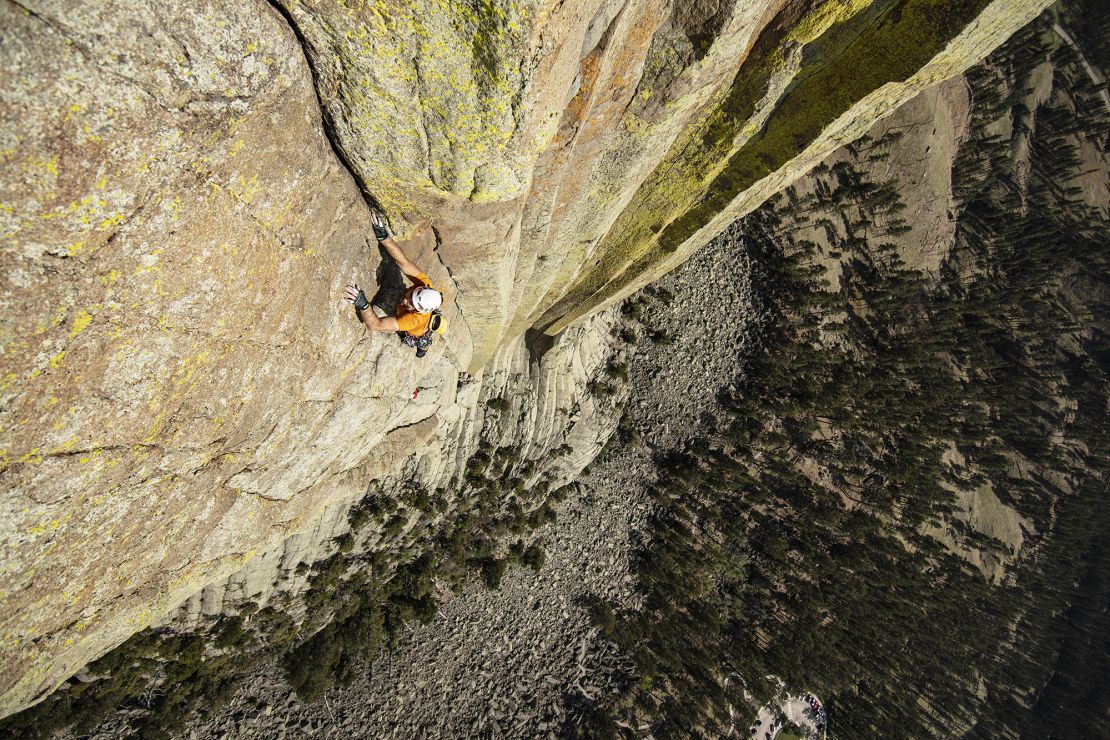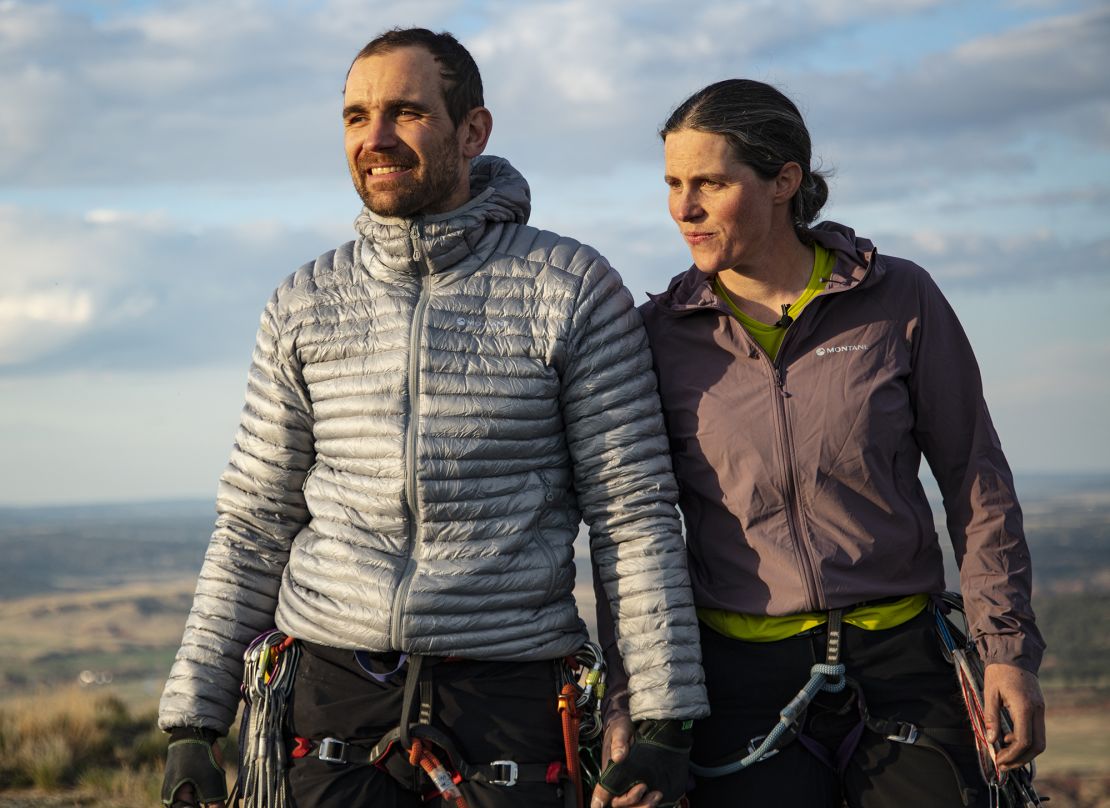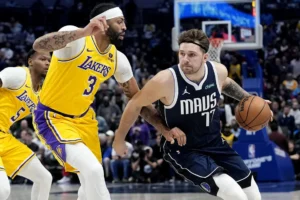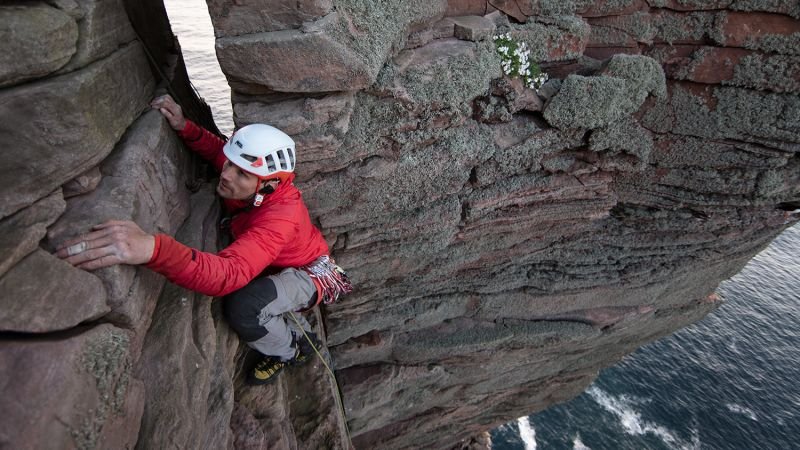Over his labored breathing, panting, and frustrated cursing, Dufton could hear the crackle in his ear of his wife and climbing partner, Molly Dufton, offering assurance and crucial guidance from the ground below.
“I got you. Go on buddy, c’mon,” she calmly said through a headset. Calves burning, fingers pulsing, heart in his chest, up Dufton went, scrambling onto tiny handholds and jamming his legs in cracks to move up the sheer wall.
Born with a degenerative eye condition called cone-rod dystrophy, Dufton is blind, able to see no more than a “bunch of flashing lights” if he were to hold his hand in front of his face.
But that’s not to say he wasn’t aware of how high he was free climbing on the imposing El Matador on the aptly named Devil’s Tower in Wyoming – the “whizzing” of birds flying underneath his feet and the gusts of wind underneath him provided telling clues, he tells CNN Sport.
“On El Matador … I wouldn’t say that I was utterly terrified. Exhausted? Yes. Terrified? Not particularly,” he explains.
“My fear level is now more correlated to the amount of danger that I perceive myself to be in. If I can be up high, but if the climbing is easy and I’ve got loads of gear, I am not stressed. I am only stressed when I think I’m going to fall off – and I’m even more stressed when the gear isn’t good.”
Though he started climbing at age two with his father, by 11, Dufton had only 20% of his vision. His sight has gotten progressively worse, and now aged 39, Dufton only has light perception.
He has climbed the famed Old Man of Hoy in Scotland’s Orkney Islands and also became the first blind climber to establish a multi-pitch route on a 300-foot cliff in Morocco’s Lesser Atlas mountains.
It took just a day for Dufton and his wife Molly to climb El Matador, climbing the monolith’s cracks, columns and overhangs to make him the first blind climber ever to achieve the feat. Their journey is documented in the newly released “Climbing Blind II,” available through BritRock Films.

BritRock Films
Though Dufton had hoped to “on-sight” the route, which means climbing a route with no falls and never having watched another climber complete it – “not a problem for me,” he chuckles – a slip and a fall meant this was off the cards. He admits El Matador was “the hardest route I’ve ever attempted.”
But rather than let his lack of eyesight limit him, Dufton continues climbing impressive and technical rock faces, he says, as a way of “giving fate the middle finger.”
“I don’t want to have my genetic fate determine my life choices,” he adds, musing that “crossing the road on the way into the office is more dangerous because I can’t see the cars. I have no control over them, I’m just listening for them … in an instant, you could die.
“If you never take any risk, you condemn yourself to the certainty of missing out.”
Dufton says that while climbing El Matador, he took “several massive whippers (falls)” but was fine because of preparation and mitigation methods.

His wife Molly tells CNN Sport that, once the hardest pitches at the beginning of the route were complete, “It was almost like we were celebrating kind of halfway up the wall. So when we got to the top, I think it’s almost a bit muted. It’s amazing to get on the top.”
She adds: “I’ve been climbing for over 20 years myself and I climb to a decent level, but still, some of the stuff he gets up … it’s just insane.”
A partnership built on trust
Dufton and his wife have spent the duration of their partnership climbing. After meeting at university 20 years ago, the pair have devised a system using a two-way radio to communicate. He climbs and she belays him on a rope, and vice versa.
“If I’m leading the climb, before I leave the ground, Molly will run through the route with me, and the things you’re looking for is to communicate what is the line of the route, and also, most importantly, where’s the first gear (going to be placed),” Dufton explains.
“We’ve been doing it for a while, so it doesn’t feel like that unnatural anymore,” Molly says. “It just kind of seems almost normal now, but at the beginning, I think you do feel a lot of extra responsibility.
“You can’t remember everything, so I just kind of focus on the important bits, like, where there’s a big ledge where he could rest,” she adds. “Once he’s on the wall, you don’t say that much. He’s focusing on: ‘I’m kind of feeling the holds out.’”
The pair have climbed over 2,000 routes together – and those, Dufton says, are just the ones they have bothered to officially log.
“Often people ask us whether or not we argue. No, I think we’re very well-matched. And also, when we’re climbing, that takes up all the focus. It’s a pretty demanding mental activity. You’ve got no space for anything else,” he explains.












